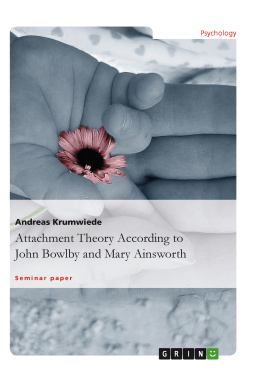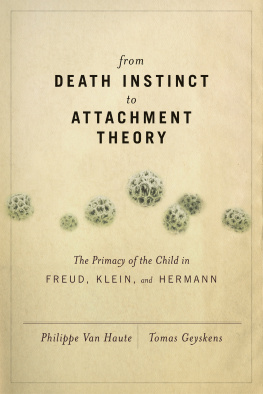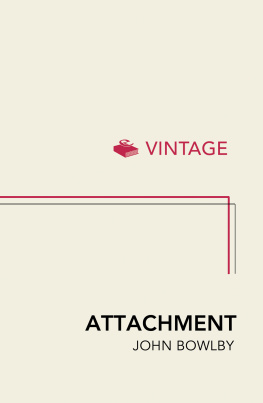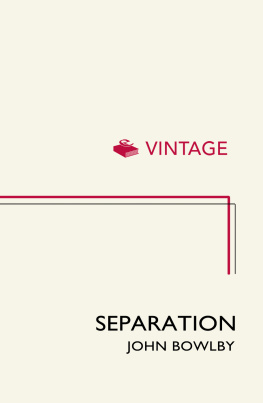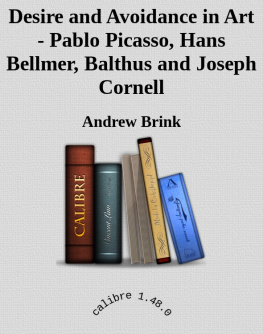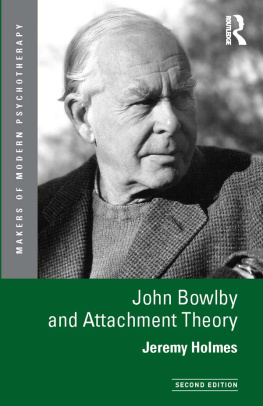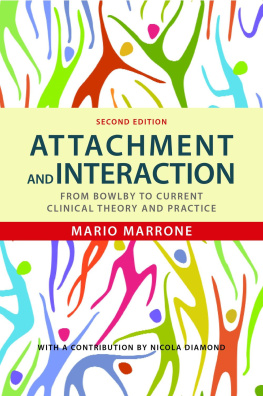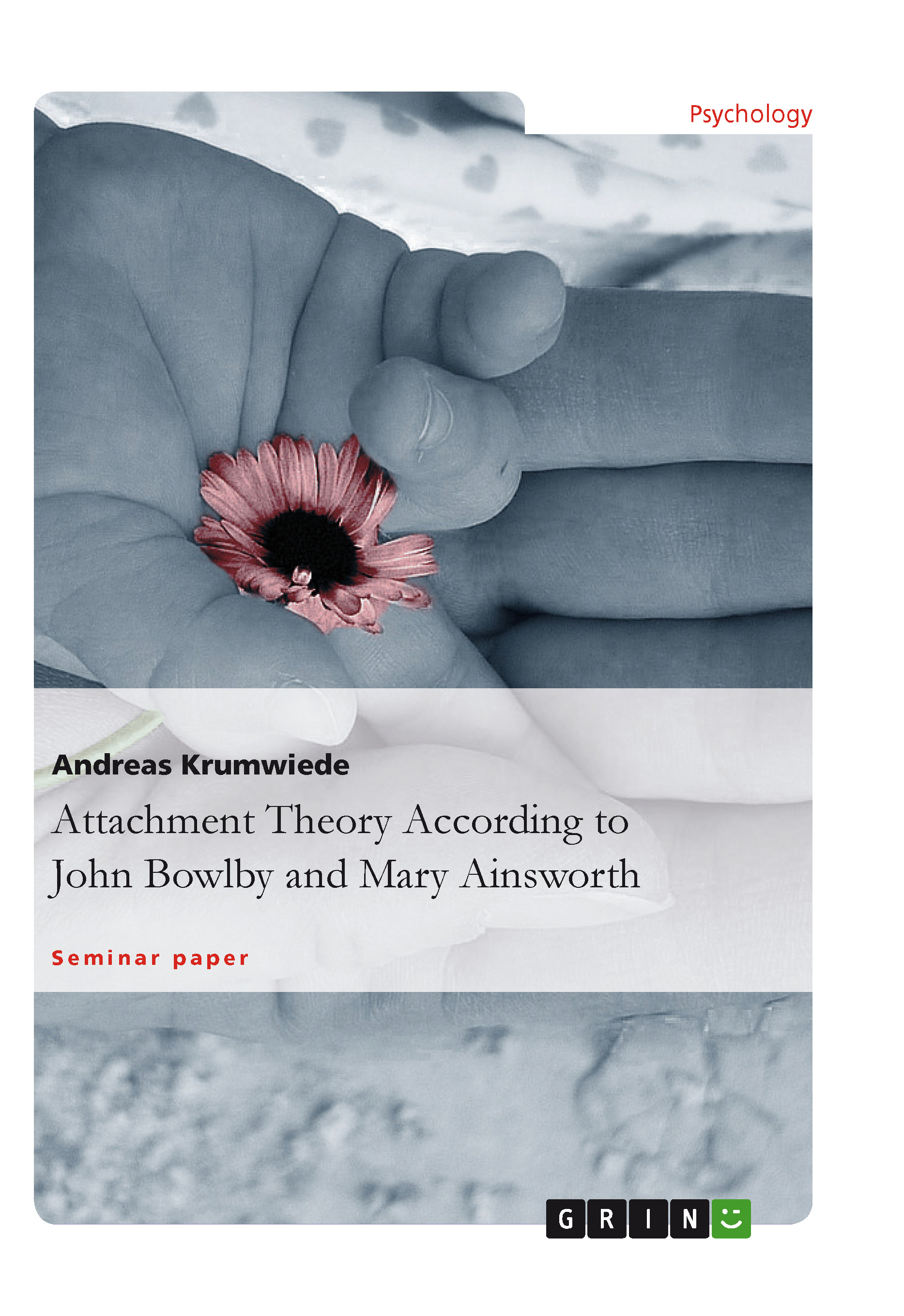I will first provide a brief historical outline of the origin and development of attachment theory, closely linked to the biographical data of its founder John Bowlby. Later I would like to point out some characteristics based on which the attachment of a person can be classified. I believe this information to be important with regard to teaching, since the teacher is acting in the environment between the institution of school, family and child. I would like to include some of the approaches in which this knowledge could be used in an everyday school setting.
John Bowlby and the Origins of the Attachment Theory
Attachment theory is a relatively new field of research within psychology. Attachment theory primarily is primarily concerned with attachment behavior and the quality of the resulting bond developed by an infant to his immediate caregiver (mother or father). The first year in the life of an infant is considered to be the essential period, in which the quality of the bond develops. After the first year the attachment behavior of an infant can already be classified as secure, insecure or disorganized/disoriented
Although the field of attachment research has been a research field for several decades now, in the beginning it has led a shadowy existence for many years. Only in recent years it has attracted growing interest in psychoanalysis. Dornes attributes this development to a feeling of disorientation in a world that has become confusing (Dornes 2000 p. 37), which brings expressions and conditions such as attachment and security back into the center of attention.
Thus the attachment theory seems to address the central emotion and a central anxiety of modern man. (ibid. p. 38)
As founder of the attachment theory John Bowlby (1910-1993) is considered one of its most important exponents. As a young man he began to study medicine, but soon abandoned his studies of medicine in favor of an internship at a school for maladjusted children. This is where he gained first experience in the observation of children and adolescents which influenced his future significantly.
He observed that infantile deprivation does not necessarily have to irrevocably shape a personality, but rather that despite an early childhood experience a different personality development was possible.
Then Bowlby went to London where he completed his medical studies and trained to be a psychiatrist for adults by Melanie Klein et.al. In the following years he worked as psychiatrist at the Tavistock Clinic, where he established a training program for childrens psychotherapy together with Esther Blick.
In 1951 Bowlby was commissioned to write a report about the situation of the many homeless and orphaned children in the post-war era on behalf of the World Health Organization (WHO) (Brisch 1999, p. 32). Bowlby published the results of the study in a popular version as a book titled Maternal Care and Mental Health and thus quickly became a well-known and respected professional. He sold 500,000 copies of the book in English alone and it was translated into 10 other languages.
In this monograph Bowlby describes the adverse impact that arises when children grow up without their mothers in institutions where their emotional and cognitive needs are only insufficiently satisfied (Dornes 2000, S. 41). The results from this report encouraged him to pursue and distinguish his theory further (see Brisch 1999, pp. 32-33). Around this time he also got to know Mary Ainsworth at the Tavistock Clinic.
His theory, which he had been developing since the 1940s, deviated from the psychoanalysis that was being developed at that time in one central point: Whereas psychoanalysis primarily (and slightly generalizing) regarded the subconscious, the death instinct and the sexual instinct and their integration or constraint by external factors as groundbreaking and the cause of development, for Bowlby real life experiences are the central source influencing an infants behavior. "One of the key statements of Bowlby's theory is that the human infant has an innate tendency to seek proximity to a familiar person. Whenever he [the infant] feels tired, sick, insecure or alone, he exhibits attachment behaviors such as screaming, smiling, clinging and following, in order to restore the proximity of a familiar person (Dornes 2000, S. 44).
In contrast to psychoanalysis, Bowlby not only focused on the inner world as the center of his observations, but also attributed crucial importance to real experiences and the external world for the development of an individual.
That earned him the reproach from the Kleinians in the Psychoanalytical Society that he had driven the poetry out of psychoanalysis [] and the imagination! (Dornes 2000, p. 43).
In this regard, Bowlby was much more pragmatic than many of his colleagues. Many considered him a behaviorist, which also owed to the fact that parts of his theory were closely associated with ethology.
So Bowlby was highly appreciated by those, to whom psychoanalysis appeared to be too speculative and unscientific and behaviorism too boring (ibid. p 44)
In the following years new developments in ethology influenced Bowlbys thinking . Some works of Konrad Lorenz had been published in English language and Tinbergen had written his instinct theory (1951)
Bowlby rejected the drive theory, particularly the relativization of libidinal/sexual needs in favor of attachment needs (Dornes 2000, S. 43) as the basic motivation for human behavior.
Relativizing the central theory of psychoanalysis brought him in disrepute within the British Psychoanalytical Society.
Another criterion, which was already of importance in the attachment theory, confirmed the reference to ethology: the direct observation of a child, a so to speak realistic evaluation of his behavior rather than interpretation of the invisible such as symbols, phantasies, dreams and their relationship to the subconscious.
Between 1957 and 1960 Bowlby wrote three essays, which he extended into three books from 1969 to 1980: Attachment (German: 1975), Separation (German: 1976) and Loss (German: 1983). In them he is presenting the first complete ethologically inspired revision of his theory. The three books represent his most important work and deal in detail with the foundations of his observations and theory. A lecture he gave based on these essays at the Psychoanalytical Society was heavily criticized and led to Bowlby turning away from said society.
Attachment behaviors exist as part of the evolutionary heritage at birth; and during the first six months get more and more specifically oriented towards one or more primary caregivers (see Dornes 2000, p. 44). The infants first and foremost aim is to build security. From the experience taught by his caregivers in his first year of life he will form a sense of attachment, which, depending on the experience, can take different nuances, which are considered as different qualities of attachment (Dornes, S. 44).
Furthermore, Bowlby did not see attachment as a phenomenon, whose foundations are irrevocably laid in the first years of life, but as a lifelong process, in the course of which by positive and stable bonding experiences but also by separation and the experience of loss the quality of attachment of a person can be significantly influenced. The attachment quality acquired as an infant develops in the course of a life to attachment representation. This attachment representation represents the attachment behavior acquired later in life by further experience, so that attachment quality that was once acquired as an infant does not remain static.

